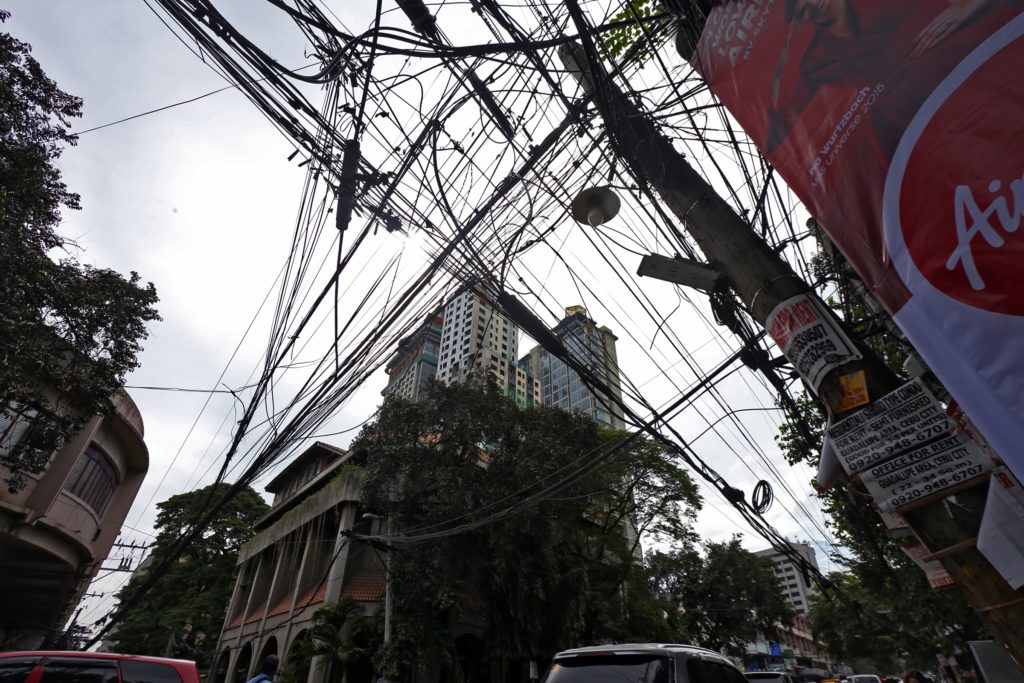
EYESORE. These dangling and entangled wires on F. Ramos and other parts of Cebu City as well as wooden electrical posts will no longer be seen in the city after Councilor Jerry Guardo wants them eradicated through a proposed resolution. CDN PHOTO/JUNJIE MENDOZA
THE unsightly “spaghetti wires” and the hazardous wooden utility posts will soon be a thing of the past.
That is, if an ordinance regulating the installation of utility posts and wires will get the nod of the Cebu City Council.
The ordinance is being authored by Councilor Jerry Guardo who met with representatives from utility and telecommunication companies yesterday.
According to Guardo, who chairs the committee on infrastructure, one of the initial provisions to be included in the ordinance is the increase in the minimum vertical height of the wires from 16 feet to 20 feet.
Another provision Guardo proposes is the elimination of all wooden posts in the city, since he believes that these structures pose a hazard to the public.
“These wooden posts should be eliminated. Once the ordinance is approved, these wooden posts nga nag exist og more than 20 years, gipang anay napod ni, all these will be eliminated,” said Guardo.
Multiple posts will also be addressed by the ordinance.
Yesterday, Guardo presented a design of the new single-post, wherein different utility companies will be assigned a specific line.
In the proposed design, the Visayan Electric Company (Veco) will have the first two levels, while telecom companies will be assigned to the third level.
Utility and telecom companies are set to have another meeting with the council to fine tune the design.
The ordinance will serve as the long-term solution to its counterpart, the Spaghetti Wires Eradication program.
The goal of the program, which started two months ago, is to clear the city of dangling and entangled wires hence the name.
So far, the program has successfully cleared off wires along City Central School, Fuente Osmeña Circle, Imus Road, Carreta area and the P. del Rosario Church area.
Clearing of the spaghetti wires is currently being conducted along Mango Avenue and is targeted to be completed by the second week of this month.
This is also to prepare the routes to be used during the Sinulog Grand Parade.
The clearing program will then move to the downtown area, followed by the barangays./Zena V. Magto, USJ-R Journalism Intern